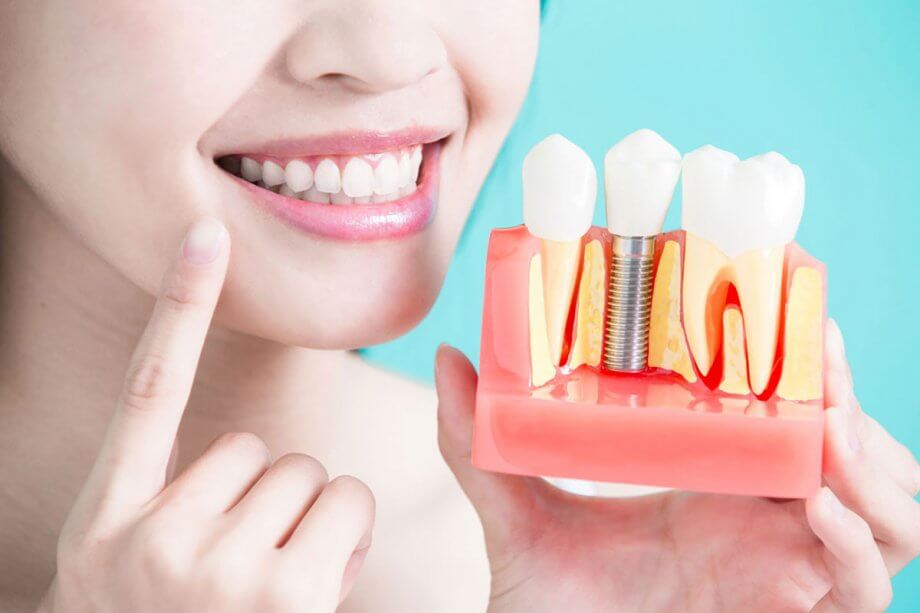Experience the most up to date Developments in Oral Implants Technology
As the area of dental care continues to evolve, the innovations in oral implant modern technology have actually been absolutely nothing short of amazing. The assimilation of technology is transforming the functionality of dental implants, guaranteeing improved outcomes and client fulfillment.
Advanced Materials for Improved Durability
In the world of oral implants innovation, the integration of advanced products has actually significantly added to boosting toughness and durability of these crucial dental prosthetics. The utilization of materials such as titanium alloys, zirconia, and ceramic substances has changed the area by offering raised resistance, biocompatibility, and strength to deterioration.
Titanium alloys are widely utilized in oral implants as a result of their outstanding strength-to-weight proportion, corrosion resistance, and compatibility with the body. These alloys make certain the stability and durability of the implant by withstanding the pressures put in during eating and talking, offering a trusted solution for individuals looking for sturdy tooth replacements.
Zirconia, a kind of ceramic material, has actually acquired popularity for its biocompatibility and all-natural tooth-like appearance. Its high toughness and resistance to wear make it an ideal choice for dental crowns and bridges, boosting the overall aesthetics and functionality of the implant.

Digital Imaging for Exact Positioning
The evolution of dental implants innovation has better advanced with the integration of digital imaging techniques, making certain precise placement of these prosthetics for optimum useful and visual outcomes. Digital imaging plays an essential role in the preparation and placement of oral implants by providing thorough 3D pictures of the patient's jawbone structure. This modern technology enables dental practitioners to evaluate bone thickness, situate crucial frameworks, and plan the specific setting and angle for dental implant positioning with unequaled accuracy.
By utilizing electronic imaging, dental professionals can create digital medical guides that act as a roadmap throughout the implant placement treatment. These guides are tailored for every person, thinking about their distinct makeup and the desired outcome. This level of precision not only enhances the success rate of oral implant procedures yet likewise reduces the danger of complications.
In addition, digital imaging makes it possible for dental experts to envision the final prosthetic reconstruction before the actual positioning of implants, permitting meticulous planning and guaranteeing that the outcome satisfies the person's visual assumptions. On the whole, the combination of electronic imaging modern technology has reinvented the area of dental implants, offering clients an extra foreseeable, efficient, and patient-specific treatment technique.

Minimally Intrusive Surgical Techniques


Advancements in medical techniques have brought about the growth of minimally intrusive methods in the field of oral implantology. These strategies aim to minimize injury to the individual, shorten recovery times, and boost total treatment outcomes. Minimally intrusive operations entail smaller sized cuts, specialized instruments, and progressed imaging modern technologies to exactly place oral implants with very little disturbance look here to bordering cells.
One key facet of minimally intrusive techniques is making use of assisted surgical treatment, where 3D imaging and computer-aided design software program are utilized to plan the dental implant placement with great precision. This permits a much more predictable outcome and can often eliminate the need for considerable flap surgical procedure.
Additionally, innovations in products and dental implant design have actually also added to the success of minimally intrusive approaches. Implants with improved surface homes advertise faster osseointegration, minimizing the healing time needed prior to the prosthetic restoration can be put.
3D Printing for Custom-made Solutions
Utilizing 3D printing innovation in oral implantology enables the development of extremely personalized remedies customized to individual patient demands and anatomical variations. This innovative modern technology enables dental experts to make and fabricate dental implants with exceptional precision and accuracy. By using electronic imaging strategies, such as cone beam computed tomography (CBCT), comprehensive 3D designs of the person's oral cavity can be created to lead the implant planning process.
One of the crucial benefits of 3D printing in dental implantology is the capability to create patient-specific implants that flawlessly fit the one-of-a-kind makeup of each individual. This customized method assists enhance the general success and longevity of the dental implant by making certain optimum fit and placement. In addition, 3D printing permits the manufacturing of complicated geometries and complex structures that would be impossible or tough to attain making use of typical production approaches.
Moreover, 3D printing innovation allows dental practitioners to simplify the implantation procedure, minimizing surgery time and enhancing overall individual experience. With its capability to produce customized solutions promptly and effectively, 3D see printing is transforming the field of oral implantology, offering individuals innovative therapy alternatives and enhanced outcomes.
Integrated Modern Technology for Improved Performance
Applying advanced modern technology in dental implantology improves capability and precision, raising the requirement of care for people undergoing implant treatments. Integrated technology plays a vital duty in boosting the general success and resilience of oral implants.
In addition, the integration of computer-aided style and computer-aided production (CAD/CAM) modern technology enables the development of custom-made dental implant restorations with phenomenal accuracy. CAD/CAM systems make use of electronic perceptions to design prosthetics that completely fit the individual's distinct anatomy, making sure optimal convenience and performance. In addition, making use of robotic-assisted surgery in implant positioning improves accuracy and reduces the risk of human error.
Conclusion
In final thought, the most up to date developments in dental implants innovation offer enhanced resilience via innovative products, precise positioning with digital imaging, minimally invasive surgical strategies, personalized options with 3D printing, and improved capability with integrated innovation - Dental implants Kent. These improvements in oral implants innovation are revolutionizing the area and providing individuals with more reliable and efficient treatment alternatives for restoring their smiles and continue reading this dental health
The combination of innovation is transforming the functionality of dental implants, guaranteeing enhanced results and person contentment.
The development of oral implants innovation has even more progressed with the combination of digital imaging methods, ensuring precise positioning of these prosthetics for optimum useful and visual end results. Minimally intrusive surgical treatments involve smaller cuts, specialized tools, and progressed imaging technologies to precisely place dental implants with very little disruption to bordering cells.
Carrying out cutting-edge innovation in dental implantology improves capability and accuracy, boosting the standard of care for patients undertaking implant treatments. Dental implants Kent. Integrated technology plays a crucial role in boosting the general success and toughness of oral implants
Comments on “Restore Your Self-confidence with Dental Implants Kent: Competence You Can Depend On”